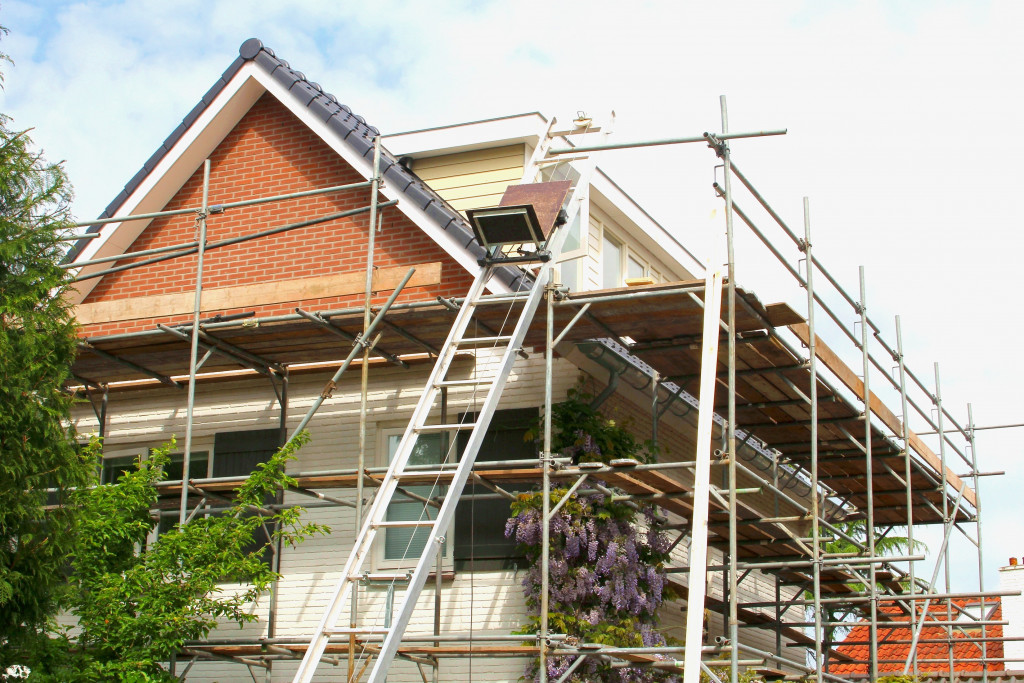- Older homes need attention to critical aspects like heating, cooling, and plumbing before aesthetic improvements.
- Making older homes energy-efficient, choosing timeless décor, and upgrading flooring add value and reduce costs.
- Working with existing architectural details and considering house extensions enhances the appeal.
- Starting renovations small, having a realistic plan, and renovating by priority make revamping older homes manageable.
As homeowners, you always want your living spaces to look and feel beautiful and comfortable without costing too much money. When it comes to improving homes, newer houses are much easier to deal with, but older houses often require a lot more time, effort, and money, especially if they require extensive renovations. However, renovating an older home can be an enjoyable experience, and it’s sometimes worth the investment. This blog post will provide tips for revamping older homes so that you can renovate your space with ease.
Focus on What Matters Most
An older home may need a lot of attention, but it’s essential to focus on what matters the most first. For example, revamping the heating and cooling systems, updating the electrical wiring, and ensuring that the plumbing works properly are all critical aspects to consider before moving to the next renovation project. These are all essential factors that need to be taken care of when revamping your older home because they can affect your long-term safety and comfort. Here are other things to prioritize:
Make it Energy Efficient
Older homes tend to use more energy than newer homes. Revamping your home to make it energy-efficient can not only reduce your energy bill but also increase the value of your home. You can do this by updating appliances, investing in energy-efficient light bulbs, installing insulation and weather stripping, and upgrading your windows and doors.
Go for Classic but Timeless Décor
One of the biggest challenges of revamping an older home is deciding on the décor you want to use. The good news is that classic, timeless décor tends to blend in well with older homes compared to a modern style. You can achieve this by using neutral colors such as beige and cream, adding decorative details, and giving every room a unique feel.
Upgrade The Flooring
Updating your flooring can have a huge impact on the look and feel of your home. There are many options to choose from; just make sure you choose one that not only looks good but is also comfortable and durable. Hardwood floors are always an excellent choice for older homes because they tend to last longer than other materials and provide more warmth.

Work with What You Have
Older homes often come with architectural details that make them one of a kind. Consider working with what you have instead of trying to change everything, especially if it’s costly to do so. Here are some ideas:
Consider House Extensions
One effective way to add value to an older home is through house extensions. This not only provides extra living space but could also increase the overall property value. However, remember that the quality of the extension matters as much as the added space. Working with companies that offer renovations and reliable WT construction services ensures that the extension complements the existing structure and enhances the overall aesthetic of your home.
Replace Your Windows
Windows are a critical part of your home’s exterior and interior appeal. Older homes typically have outdated or inefficient windows, which can significantly impact energy consumption. Replacing your windows with newer, energy-efficient models can reduce energy costs, improve indoor comfort, and update the overall appearance of your home. Remember to choose styles that maintain the classic charm of your old house while incorporating modern efficiency.
Restore The Fireplace
An older home often comes with a traditional fireplace that holds a lot of historical charm. Restoring the fireplace can bring back its original beauty and contribute to a warm and inviting ambiance. It’s essential to consult with a professional to ensure the fireplace is safe and functional. Additionally, if it’s a wood-burning fireplace, consider converting it to gas for easier maintenance and cleaner use.

Don’t Be Afraid to Start Small
Renovating an older home can be a big project, and it can be overwhelming if you try to do everything at once. Don’t be afraid to start small. Instead of taking up the entire home renovation project, start with one room or focus on one thing, like updating your kitchen or adding a new coat of paint to your walls.
Making progress piece by piece will be more manageable and rewarding in the end. In some cases, you might even be able to complete the entire renovation without having to break the bank.
Additionally, it’s essential to create a plan and have realistic expectations when revamping older homes. This will ensure that the entire process goes smoothly and you can achieve the results that you desire.
If you’re seeking to improve your living spaces, revamping your older home can be a rewarding experience. Although it may require a little more effort and time, updating its essential parts like plumbing, heating and cooling systems, and electrical wiring, going for an energy-efficient home, and focusing on classic décor styles can all contribute towards a much more enjoyable outcome. Renovating an older home can be a lot of fun and a great way to showcase your style, so go ahead and give it a try.
